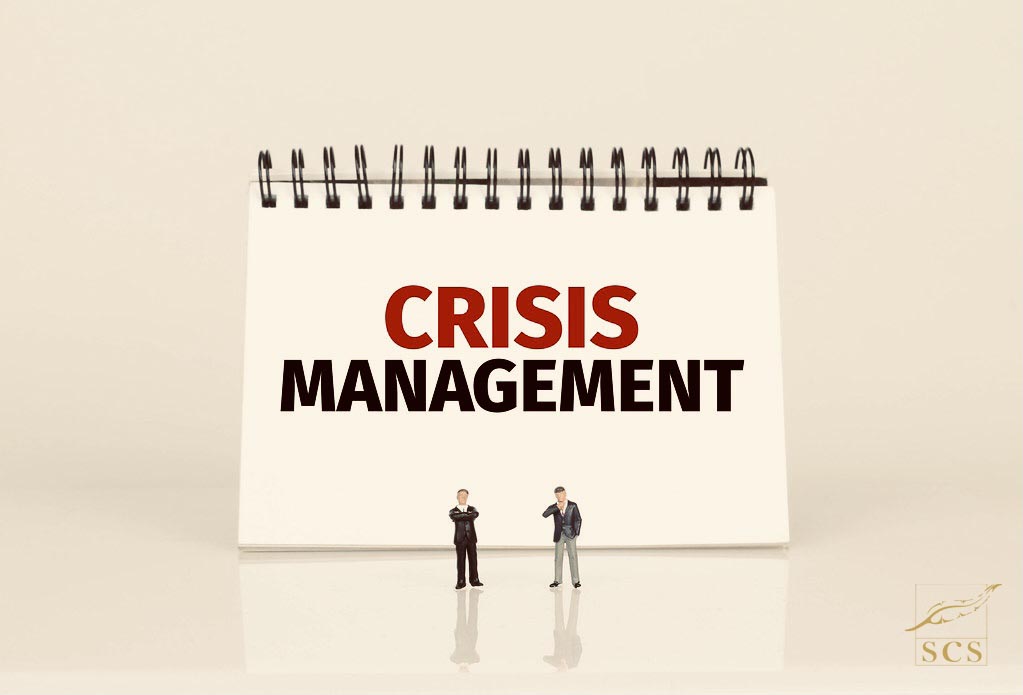It is estimated that around 62% of companies have crisis plans, whereas countless more rely on the assumption that a disaster will never hit their ranks. The latter rarely stop to consider the adverse effects, expecting that a catastrophe will magically bypass them. More often than not, these businesses don’t make it too far in their industry. For all these reasons, a security crisis management plan is one of the few vital pillars for any functioning firm.
If a corporation aspires to become a Fortune 500 member, it needs to have towering revenues. In order to accomplish this, the organization in question ought to maintain sound crisis management policies in order. And even if they do not aim that high, we still suggest keeping the relevant emergency management plans in place.
As it has been manifest for the past decades, everything leads back to internal security management and responding to emergencies. Both the failures and the successes.
Frankly, it all comes down to this question: What would the company management do in case of a contingency? Act as if nothing happened or employ adequate policies to respond to the crisis? There is no question if the emergency is going to strike, only when and how. Will it ruin the company never to allow it to recover again?
In a nutshell, there are a few factors that business owners should always bear in mind as they link to security crisis management. And these are how a disaster would potentially impact
- Employees,
- Customers,
- Suppliers,
- The general public, and
- The company’s value.
Any firm with self-respect will never allow itself to veer off track in terms of crisis management. This makes the difference between tumbling down into oblivion and staying afloat as a prosperous business.
The Step-by-Step Process to a Security Crisis Management Plan
Now that we have established that a looming threat is ever-present, we will ponder on the gradual process of building a crisis plan.
Often referred to as CMP, a security crisis management plan is a document that details the methods and rules that an organization is advised to uphold in response to a critical situation with the potential to adversely affect its reputation, profitability, or capacity to operate properly.
Health, retail, and government are the three sectors that cybercrime has been affecting the most recently. According to a University of Maryland report, a computer falls prey to a hacker attack every 39 seconds. In other words, a crisis is in the making every minute or so.
Even though physical assaults may not seem to happen as often, they can undoubtedly impact the proper functioning of a company. An example of this is connecting a USB stick to a company’s hardware without adequate authorization.
To prevent cyber and physical attacks against your organization, we suggest following the step-by-step process below.
Verify Basic Principles and Complete a Risk Assessment
The first action in creating a security crisis management plan is reviewing an organization’s mission and values. By doing so, you will establish whether the plan reflects the company’s goals.
The sub-step is identifying top strategic priorities during a crisis. This may encompass the capacity to resume fulfilling orders or providing services to customers shopping online. On that note, this question can be helpful: How will you continue to cater to the needs of your clients, employees, suppliers, and the local community if an emergency strikes?
Next, rank all potential varieties of crises by severity and probability. Every company is distinct in this regard since its line of work will determine many risks and vulnerabilities that may ensue.

Perform a Business Impact Analysis
Sometimes called BIA, a business impact analysis serves to clarify the likely impacts on a company’s business. It would be best if you based your BIA on the risk assessment produced in the first phase.
A detailed inquiry as part of the business impact analysis ought to cover disruptions in
- Processes,
- Production, and
- Delivery of services.
Note that your BIA is incomplete in case any of the three components are missing.
Conduct Response and Contingency Planning
Arguably the most critical segment in creating a CMP, response and contingency planning helps you deal with the practical aspects of a real crisis.
With the first two steps in the process focusing on analysis and assessing, the third one applies an all-hazard approach. This means that you probably could not predict a crisis to the letter and that your company would be better off by adapting to a broad array of circumstances.
Some actions that a corporation can take when confronted with a crisis include the following:
- Summoning emergency services,
- Shutting down production,
- Examining relevant legal issues,
- Issuing a holding statement,
- Arranging an emergency line of credit,
- Evacuating a facility,
- Implementing physical security measures,
- Turning off utilities.
In this phase, we advise that the company staff and management study the causes of crises and introduce methods to prevent them.
Bonus point: Identify a spokesperson for communicating with the public during severe calamities. They should be a C-level executive.
Train and Coordinate
At this stage, all relevant company personnel should have access to the crisis plan. Key staff members must know how to perform their roles during a contingency.
In this sense, make sure that the details are available electronically and physically at designated places. If needed, train the staff individually and instruct them on their duties.
For best results, we recommend performing tests and drills once a quarter. That way, the company staff will have the CMP fresh in their minds.
Review and Update
Last but not least, to have an updated and relevant security crisis management plan, we suggest scheduling regular reviews.
A lot could have changed from the day you initially rolled out the crisis plan. For instance, evolving situations related to suppliers, facilities, and processes could require your company to make updates. Thus, be on the lookout and review your plan yearly, if not more frequently.
Summing Up
Crises come in all shapes and forms and are increasing in numbers and intensity. Nonetheless, they all usually threaten the company’s finances, reputation, strategic objectives, or operations ― or all of the above.
According to the Cambridge English Dictionary, a crisis is an extremely difficult or dangerous point in any situation. In our case, it can potentially jeopardize lives, safety, and health and lead to long-lasting consequences for an entire corporation and everyone involved in working with it.
In closing, a crisis is not over once it is over. Although people wish to forget about it and move on, this is a detrimental approach that results in numerous unfavorable outcomes, short-term and long-term.
For all the reasons outlined above, firms such as SCS grant priority to creating a superb security crisis management plan that builds on opportunities. In the words of John F. Kennedy: When written in Chinese, the word crisis is composed of two characters. One represents danger, and the other represents opportunity.


November 25, 2021 Author Secure Travel in Ethiopia: Your Simple Yet Effective Guide
[…] business ― and sometimes barely making it alive ― in large portions of the country requires immense caution. Worryingly, no matter the effort that some organizations invest in mitigating the consequences, it […]
November 25, 2021 Author Security Driving: The Process Behind Choosing a Driver SCS Solutions Ltd
[…] means like any other. It can be your preferred method of transport, but you should know that most attacks against VIPs occur while sitting in their […]
January 13, 2022 Author West Africa - Crisis Management - SCS Solutions Ltd
[…] and suppliers. In fact, SCS took six weeks to map the issue, study the case, the numbers, and the operations methods. Additionally, we also started cooperating with the […]
January 13, 2022 Author The Next Lebanon War – Part I - SCS Solutions Ltd
[…] article aims to reveal the new challenges Israel will face in the next war against Hizbullah. The main question remains: for how long will […]